If you work in the Semiconductor or related industry, you know that industry cycles can profoundly impact your business. It is crucial for strategic development to invest at the appropriate time and to rope the sails when necessary.
As a semiconductor investor, you’re accustomed to the ebb and flow of industry cycles. It’s a reality that even the most stable long-term growth stocks must adapt to. But with the right understanding and preparation, you can predict and make informed investment decisions during these cycles.
My work aims to extract insights from the analysis of public data, insights that can be used to predict where the Semiconductor business is heading. While Semiconductor companies are different, these are the waters all semiconductor companies are navigating. Predicting a company’s business is different from predicting the stock price. The stock market has its logic, but eventually, it will align with the company’s underlying business.
One of the pivotal areas of the Semiconductor industry is the foundry market, which is dominated by TSMC. Born out of frustration with the American ability to compete effectively with the Japanese, the Taiwanese giant is unrivalled from an advanced logic perspective. TSMC always deserves a particular analysis in my research, but researching the entire foundry industry for insights is often valuable.
The development of the Foundry market impacts many companies. A survey from last week confirmed this:
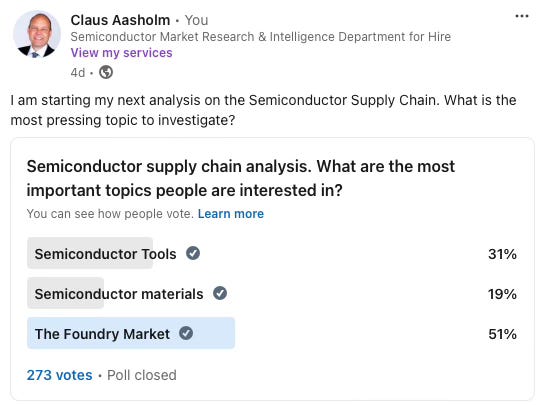
Q2-24 Status of the foundry market.
It was another growth quarter for the foundry companies. Collectively, the industry grew by 10.2% QoQ and 19.6% YoY to $33.5B, which is still some distance from the last peak of $35.4B
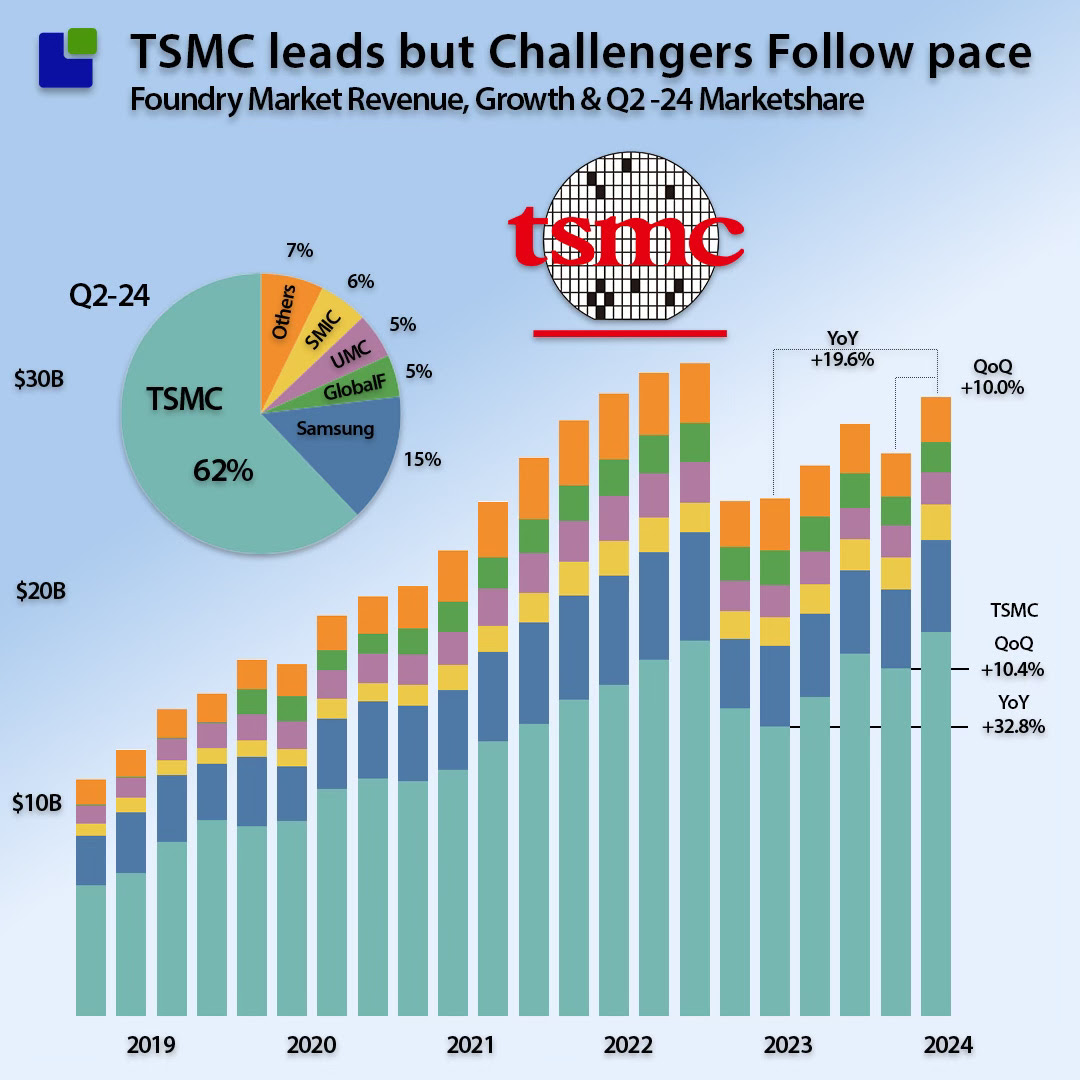
TSMC’s dominance is undeniable, and as the current market situation is driven by AI’s need for leading-edge GPUs, it is no surprise that TSMC gained additional market share in Q2-24 although only marginal. The rest led by the Chinese foundries are matching the pace.
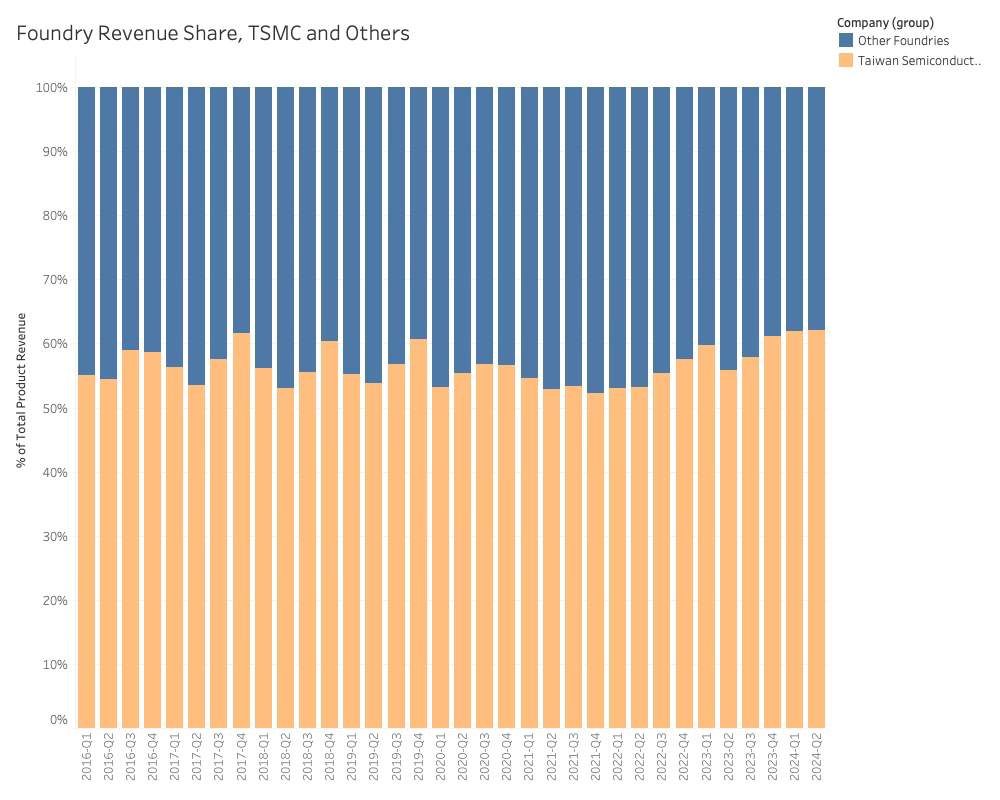
After some wobbling quarters, TSMC is now consistently increasing market share. TSMC’s market share has passed 62%, up from the latest low of 52% 10 quarters ago. This is likely to continue for the next few quarters as Intel and Samsung struggle to challenge TSMC’s leading-edge leadership.
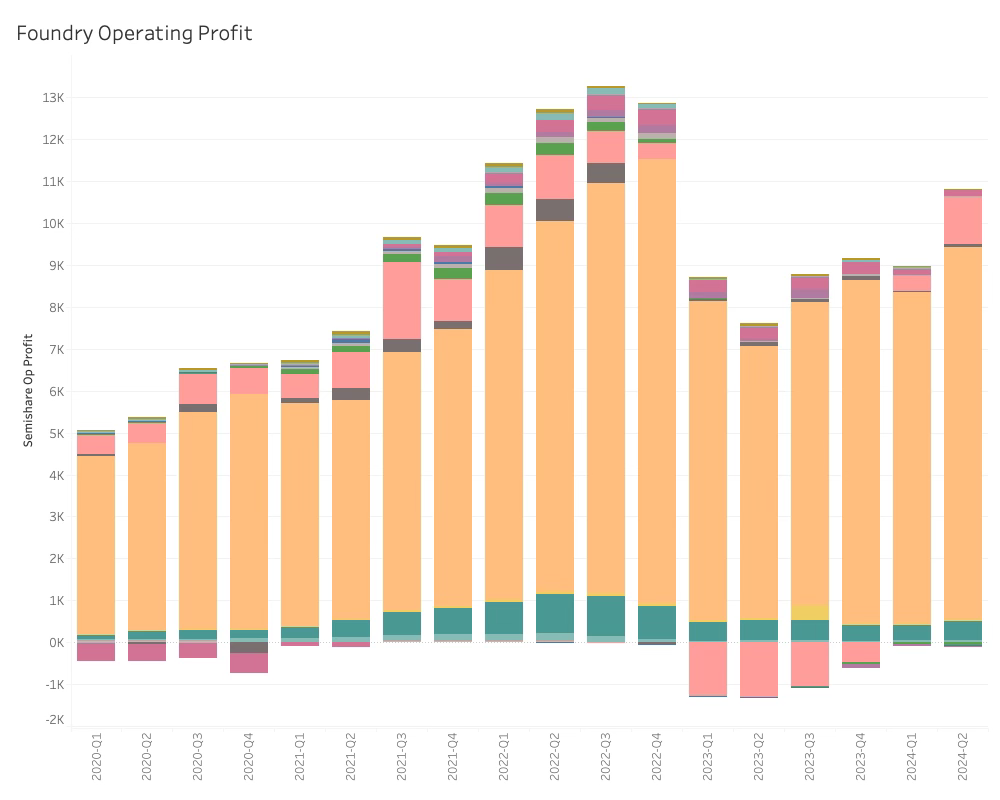
The operating profit took a significant jump upwards and is completely dominated by TSMC. The AI leading edge boom is likely to benefit TSMC even more and it is obvious why TSMC is content even though Nvidia captures most of the value.
The increasing operating profit could indicate that we are entering shortage territory again soon, as it is only a couple of billion short of the record.
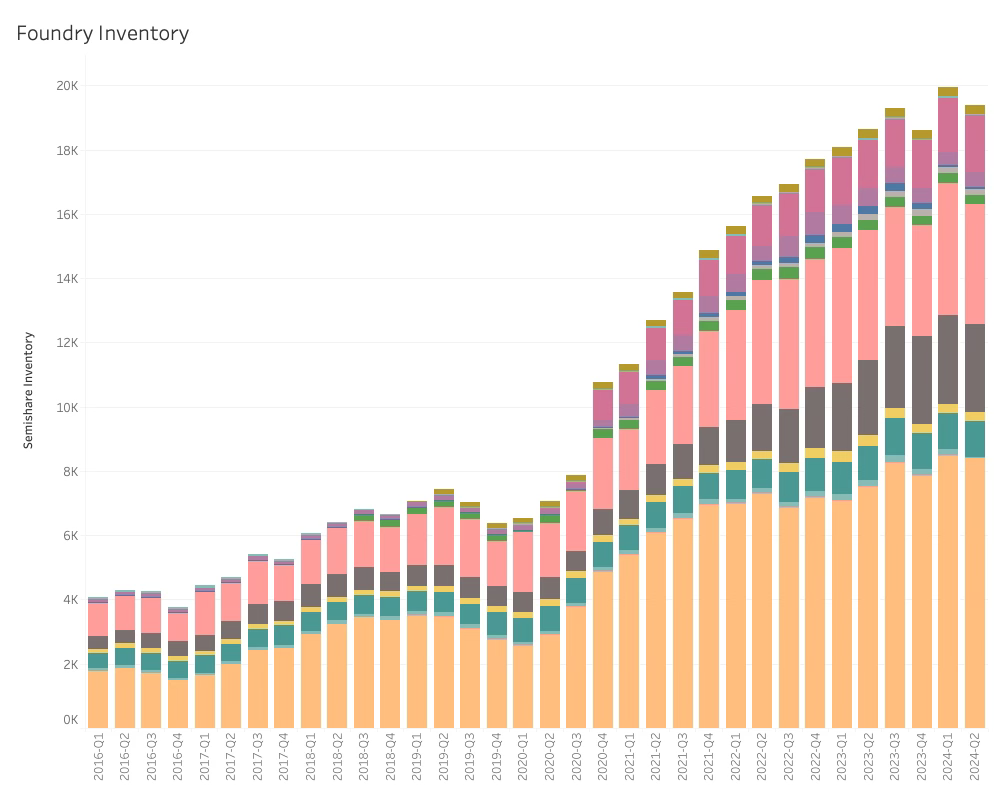
However, the collective inventory position of the Foundries shows that, in all likelihood, the industry is in balance and is not near the capacity maximum. A deeper dive into the numbers can uncover more insights
The deeper insights
The revenue from a technology perspective is moving at a rapid pace. More than half (SMIC excluded from this analysis) of the top 5 foundry revenue is at 7nm-3nm. That is up from just over a third, 2.5 years ago.
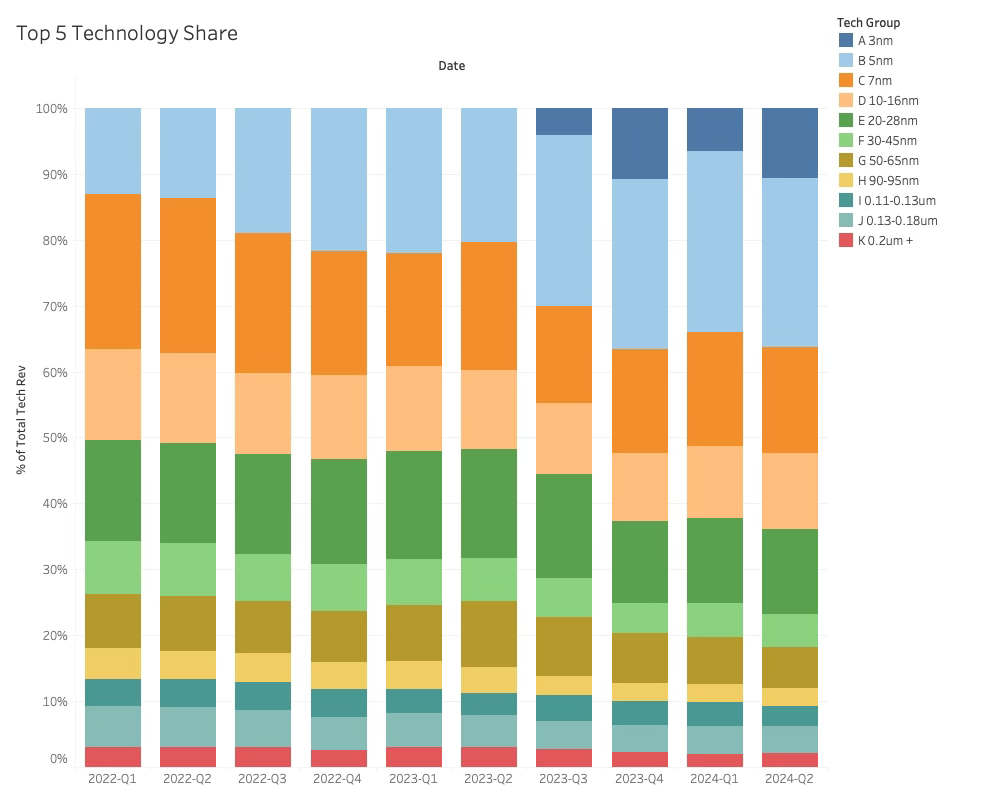
While not a problem yet, we are not far from a situation where it will become challenging to get mature technologies from Western companies.
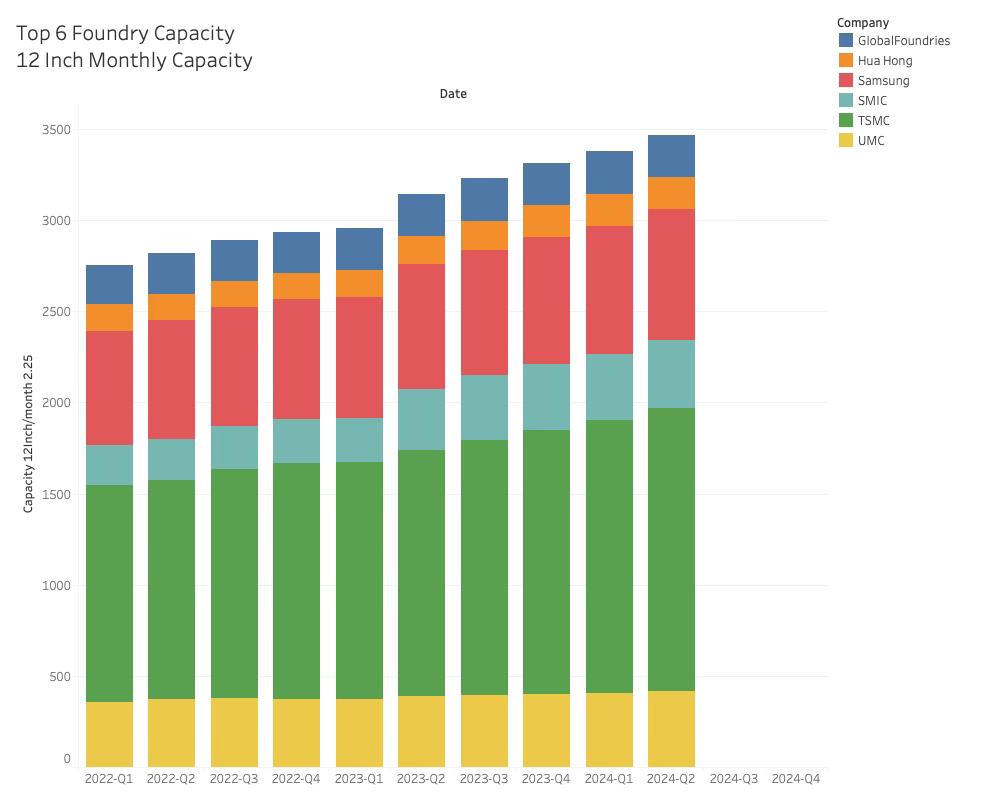
The wafer fab capacity has increased significantly over the last cycle. For top 6 the combined capacity has grown by 11% CAGR, with SMIC leading the pack. With CapEx investments higher than revenue, the Chinese foundry was able to grow capacity by 29% CAGR since beginning of 2022.
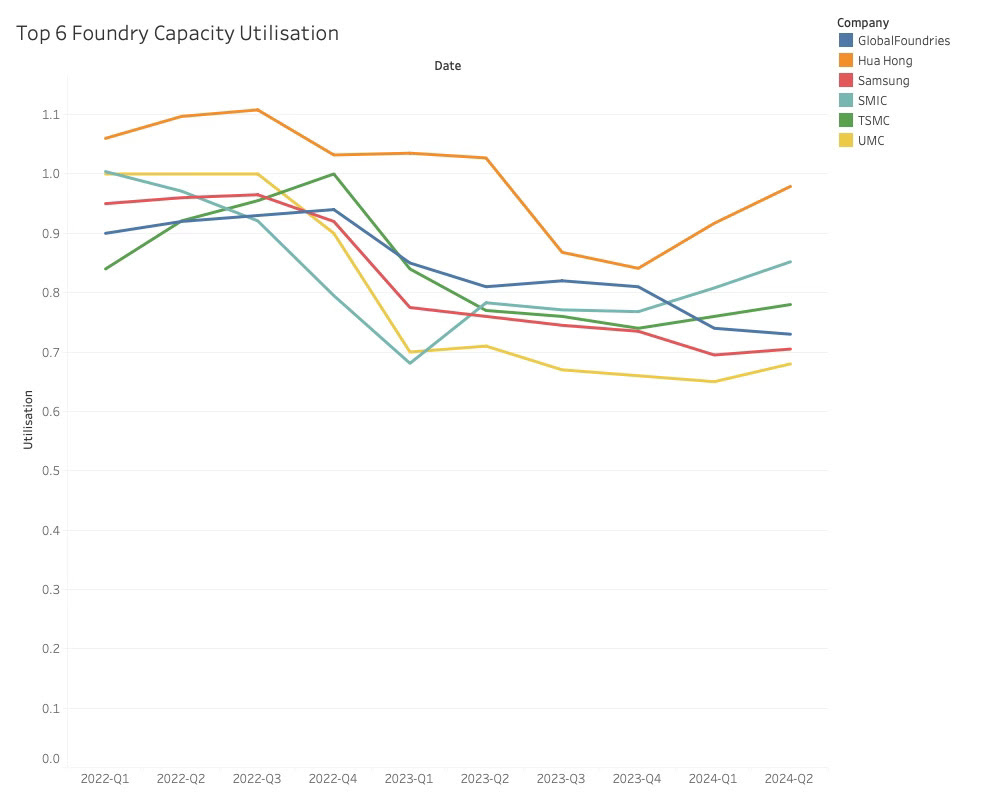
The utilisation of capacity is on the rise for all major foundries, first and foremost the Chinese operations, while TSMCs have a more modest increase at the 80% range. In all likelihood TSMC have quite different loading of the different factories according to technology with pressure on 3nm.
Brick owners of the Semiconductor Industry
It is no secret that semiconductor manufacturing is expensive, which is why most semiconductor companies have chosen the fabless model, leaving the investments to the foundries.
While capacity levels give a good idea of the online capacity at a given time, they do not indicate future capacity. It is valuable to look at the companies’ balance sheets and the financial value of the manufacturing assets. Property, Plant, and Equipment are almost all manufacturing assets for semiconductor companies.
It is worth noting that manufacturing assets are allocated to the country of incorporation, so all of Intel’s PPE will register as US. Of course, reality is more complex so this cannot be used to evaluate the impact of the US chips act.
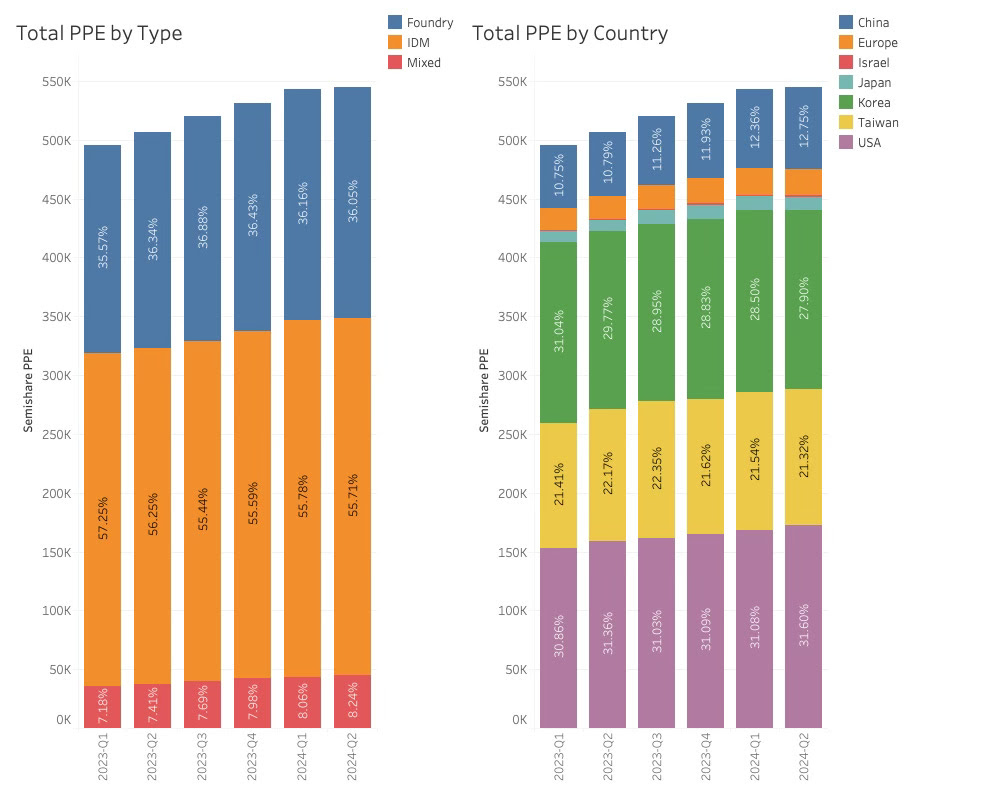
The PPE view shows that the financial value of the manufacturing assets is closing in on $550B. This is not only ready facturing but also land and construction in progress.
We divide the PPE into three categories to get a feel for the strength of the different manufacturing models:
IDM – Integrated Device Manufacturers manufacturing their own Chips
Foundry – Manufacturing for other IDMs and fabless companies
Mixed Manufacturing – Speciality fab owners that buy advanced logic from Foundries
The chart shows healthy growth, indicating more capacity will come online in the near term, but also a decline in growth in the last quarter. This signals that the investments from the last peak are coming to an end, and PPE growth will be slower.
The CapEx spend can be analysed to gain insight into the longer term future capacity.
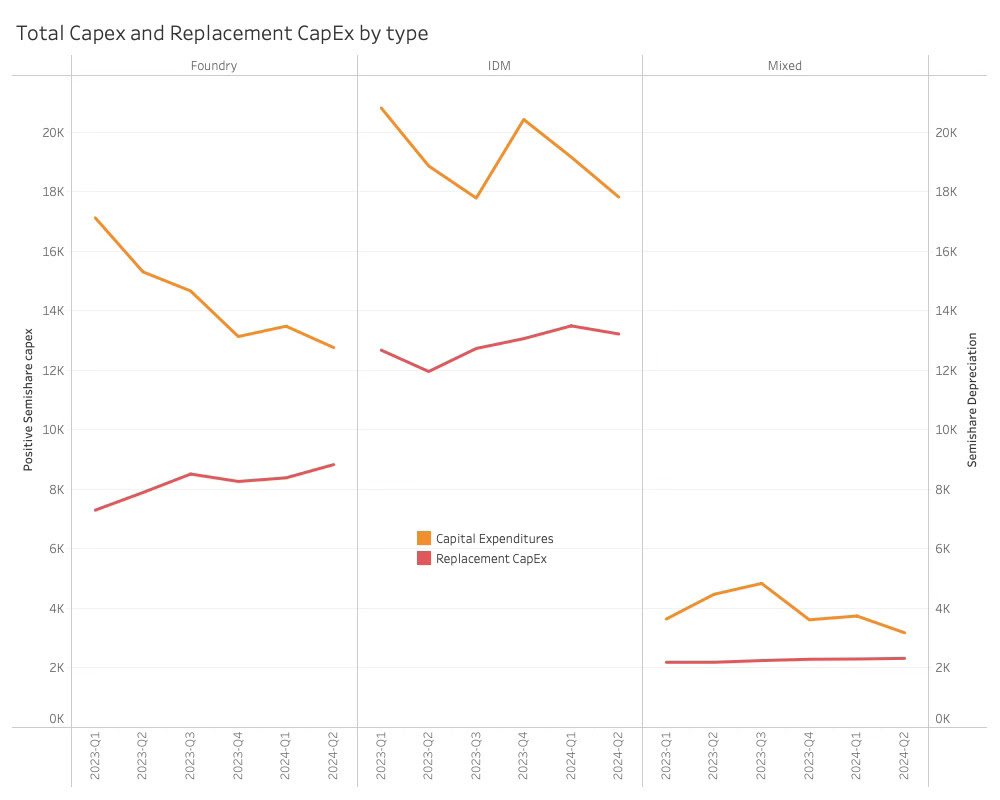
It may seem a little bit counterintuitive, given all of the noise about the Chips Act, but CapEx investments are actually declining. It could be easy to interpret this as the Chips Act not working. However, a more likely answer is that the Chips Act changed the investment strategy of most of the large manufacturers to align with it, and investments will accelerate later.
The investment levels in each of the manufacturing types are well above the replacement capex, which represents the capex needed to maintain the same level of capacity.
Conclusion
It was a good quarter for the Foundry companies, particularly TSMC and the Chinese foundries. TSMC’s strong profitability shows that the company does not have to make concessions to keep and win business and is still miles ahead of Samsung.
While TSMC is still far from full capacity, the Chinese foundries are getting closer. As they have lost a significant proportion of their Western business, this is a sign that the Chinese electronics manufacturers are increasing their purchases.
The short-term capacity increase is likely to tail off, as indicated in the PPE development for both IDMs and foundries. This is a result of the last investment peak and the following CapEx pause.
The large gap between current CapEx and replacement CapEx will benefit the longer-term capacity. This has been somewhat delayed but will accelerate once TSMC starts filling its new factories. There will be sufficient capacity, but maybe not the right kind.
The dominance of TSMC will continue, but the Chinese Foundries are punching above their weight and will soon own a significant part of the mature technologies. TSMC will only make limited investments into these technologies and Western fabless companies will have to find a way back to the Chinese foundries without alienating the US government.
Pledge your support for this content
Also Read:
A Post-AI-ROI-Panic Overview of the Data Center Processing Market
TSMC’s Business Update and Launch of a New Strategy
Has ASML Reached the Great Wall of China
Will Semiconductor earnings live up to the Investor hype?
Share this post via:





Quantum Advantage is About the Algorithm, not the Computer